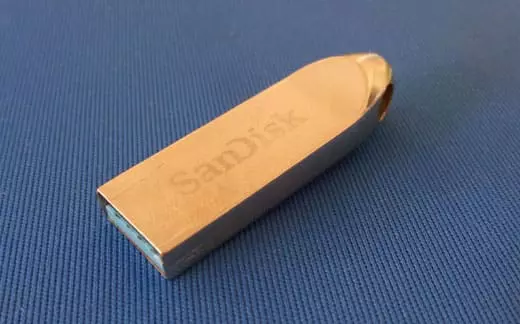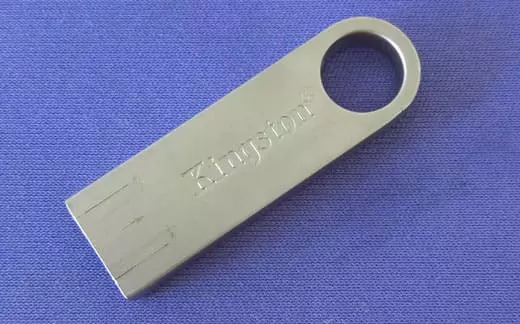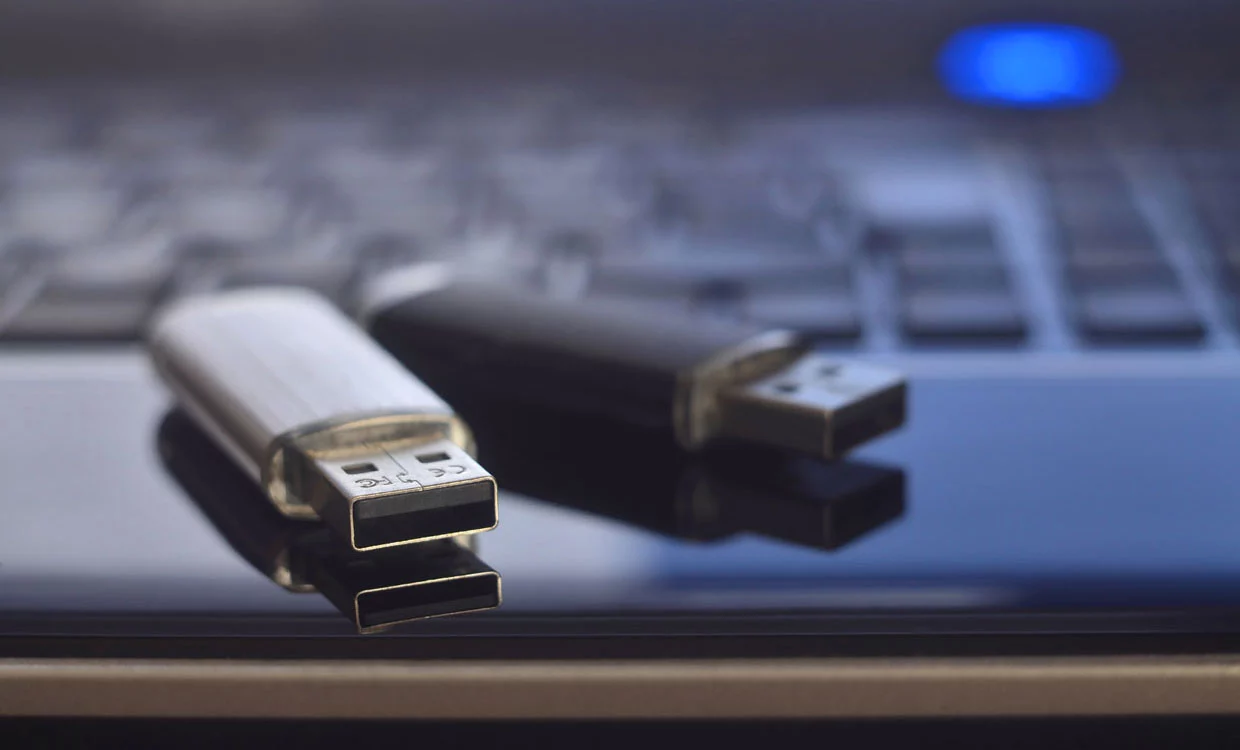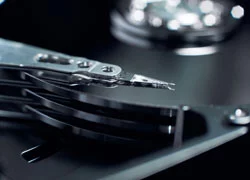Counterfeit flash drive – Beware of attractive prices!
You see an ad for a 2TB Flash Drive with a very low price and are tempted to take advantage of the opportunity to have plenty of space for a very attractive price. And to try to convince you even more, note that they have a well-recognized brand in the market.
Don't be fooled! Flash drives advertised with very high capacity, such as 2TB (terabytes), at very low prices are often suspected of being counterfeit or fraudulent. This is because the production of genuine flash drives with this capacity is still quite expensive and technologically challenging.
What are these counterfeit flash drives?
A counterfeit flash drive is a USB storage device that is manufactured to look like a legitimate product from a well-known brand, but in reality, it is an illegal copy and often of inferior quality. These flash drives are often sold at very low prices, which can attract consumers looking for a good deal.
However, counterfeit or tampered flash drives can present a number of problems. They may have false storage capacity (i.e. they claim to have, for example, 128 GB but actually have much less), slower data transfer speeds than advertised, and a shorter lifespan. Furthermore, they can also be prone to corrupting data or even contain malware, which poses a security risk to user data.
Usually, counterfeiters change the firmware of the Flash drive to make it appear larger than its actual capacity. For instance, a genuine 16GB pen drive can have a maximum LBA of around 31,457,280 sectors (assuming each sector is 512 bytes). This value may slightly vary depending on the manufacturer.
A 2TB flash drive would have a much higher number of LBAs, in the billion range (something close to around 4 billion).
Forgers change the maximum LBA of the Flash drive, making it appear to the Operating System as a 2TB drive in size. However, its actual physical space, which is the space capable of receiving data, is much smaller. This means that it will not be able to store anything beyond the capacity of its NAND memories, resulting in corruption of any data recorded beyond its limits.
LBA (Logical Block Addressing) is an addressing method used to identify individual sectors on a storage device, such as a flash drive. It allows the operating system and storage device hardware to uniquely identify each block of storage. Flash drives typically have 512 bytes in each sector.
How to identify a fake flash drive?
Identifying a fake flash drive can be challenging, but there are some signs that can help you detect whether the device is genuine or counterfeit:
- Very low price: If the price of the flash drive is considerably lower than that of well-known brands or similar products on the market, it may be an indication that it is a counterfeit.
- Suspicious storage capacity: Counterfeit flash drives often claim to have much larger storage capacities than normal for that type of device (e.g. 1TB or 2TB at very low prices). Testing the actual capability using verification tools can help identify whether the capability is true or not.
- Brand and design: Counterfeits may have logos, branding, or designs that are similar to, but slightly different from, the original products. Checking details such as the logo printing quality, colors, material, and finish of the device can help identify a possible counterfeit.
- Underperforming: Counterfeit flash drives may have much slower data transfer speeds than specified. Testing read and write speeds can reveal whether the device's performance meets advertised specifications.
- Unreliable seller: Buying from untrustworthy sources, such as shady sellers on unverified online marketplaces, can increase your risk of purchasing a fake flash drive.
- Packaging and documentation: Counterfeits often have poor-quality packaging, misspellings, and missing or inaccurate information. Checking the authenticity of the packaging and included documents can help identify a fake product.
If you suspect that you have a fake Flash drive, testing the capacity, performance, and authenticity of the packaging can help confirm your suspicions.
How to test a flash drive to identify its real size?
To test the actual size of a flash drive and verify if the advertised capacity matches the real capacity, you can utilize some simple tools and methods:
- Capability Testing Software: There are several free tools on the internet that can check the actual capacity of a USB storage device. Some examples are H2testw and ValiDrive. These programs write and read data to the Pen drive to determine its actual capacity. But be careful, as these programs write to the entire Flash drive, they erase all of its content! If you have important data written to the Flash drive, do not run this test! Seek help.
- Disk Manager (Windows) or Disk Utility (macOS): You can check the capacity of the Flash drive using the operating system's native tools. In Windows, go to Disk Manager, right-click the Flash drive, and choose "Properties" to see the capacity. On macOS, open Disk Utility, select the Flash drive, and check the device information.
- Complete fill test: You can copy files up to the declared space limit on the flash drive. If the device has a lower capacity than advertised, it will not be able to store all the files.
ATTENTION! Be careful when using software to test the pen drive's capacity. Normally, they write to ALL sectors of the pen drive to check its real size. This means that if you have important information on it, you should resort to Data Recovery BEFORE, to save the lost files.
By using these techniques, you will be able to determine whether the flash drive has the stated capacity. If the device does not match the advertised capacity, there is a high probability that it is counterfeit or defective.

Counterfeit 32GB flash drive sold as 2TB flash drive - Fake flash drive
How to avoid buying a fake flash drive?
Avoiding the purchase of a fake flash drive requires some care and attention when purchasing the device. Here are some tips to help avoid counterfeit flash drives:
- Buy from trusted sources: Choose to buy from well-known stores, authorized resellers, trusted e-commerce sites, or directly from manufacturers. This reduces the chance of purchasing counterfeit products.
- Research the product: Before purchasing, research the specific model of flash drive you want to purchase. Check the actual details, features, and capabilities of the device on the manufacturer's official website.
- Realistic Price: Be wary of offers with very low prices for very high storage capacities. Flash drives with extremely large capacities at very low prices are often counterfeit.
- Check the packaging and design: Counterfeit products may have packaging with spelling errors, poorly printed logos, or designs that subtly differ from the original. Compare the packaging and device with official photos and information available on the manufacturer's website.
- Test capacity and performance: After purchasing the flash drive, test its actual capacity using reliable storage checker tools. Also, check if the performance (read and write speed) matches what is promised by the manufacturer.
- Check comments and ratings: Reviews and comments from other buyers can be helpful in understanding the quality and authenticity of the product. Check for reviews about fakes or negative experiences with the same product.
- Dealer Authenticity: Make sure the seller is authorized by the manufacturer and offers warranties or return policies in case of problems with the product.

Counterfeit 16GB flash drive sold as 2TB flash drive - Fake flash drive
By following these guidelines and paying attention to details when purchasing a flash drive, you can significantly reduce the risk of purchasing a fake or low-quality device.
Conclusion
It is highly recommended to exercise caution when finding flash drives with extremely high capacities at very low prices.
It is important to note that, as with any product, it is essential to purchase from reputable manufacturers and authorized resellers to ensure that you are purchasing a legitimate device and not a counterfeit that promises greater storage capacity than it actually offers and that may compromise security and the integrity of your data.







